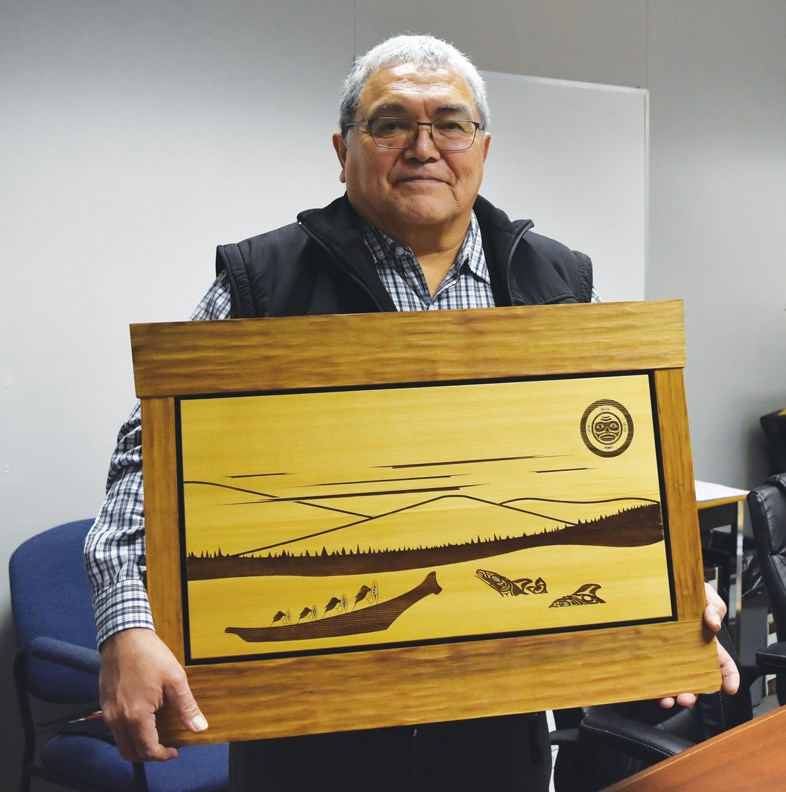The shíshálh Nation and Interfor Corporation announced they have signed a five-year agreement that will guide how the two entities work together to log the Nation’s traditional swiya (territory).
“This is 20 years in the making – we’re just lucky enough to be the ones signing the agreement,” said Chief Warren Paull. Interfor has tenures that cover 179,000 ha, located within the shíshálh Nation’s swiya.
The genesis of the agreement dates back to the early 2000s, said Paull, when the Nation undertook a traditional land use study, supported by the province, that allowed them to identify areas of cultural significance within their territory. This resulted in the creation of a Strategic Land Use Plan, which was never formalized because of a change in government in 2005.
In 2007, Interfor, which already had an established history working with shíshálh Nation, signed a Forestry Protocol Agreement with the Nation, paving the way for Interfor and shíshálh Nation to blend their allocated tenures to maximize profits, while respecting the culturally significant areas in the shíshálh territory.
“They were very supportive of that, which was just huge with regards to the way we protect our swiya,” said Selina August, shíshálh councillor.
There are approximately 600,000 cubic metres of total annual allowable cut in the Nation’s swiya and prior to these agreements shíshálh Nation had access to around five per cent of that cut. These agreements have allowed the Nation to jointly harvest the cut, and the current agreement will increase the Nation’s access to volume. “It’s actually a cross pollination,” Paull said.
It’s unknown how much money the Nation will make from this new relationship. Currently Interfor and shíshálh are deploying a pilot project that is governed by a joint advisory committee to ensure the process and implementation of the agreement is followed. Paull says the current pilot project, which he says is large, could generate between $500,000 to $1 million.
“We’re still working on the volume, where to log the wood, how to log the wood and how to blend the wood to make it cost effective. We’ve only just got that volume added to it and just last week just had the areas charted out, the blocks, so we’re at that point where we’re having the conversation for how we can blend, how we can make it work,” Paull said.
The agreement will likely also mean more jobs for the community.
“We now have enough within our range to be able to employ a full crew for a full year,” he said.
The community wants to increase training and employment within the forest industry. Currently, between 15 and 20 shíshálh members work in the forestry industry, which August says is low.
The ultimate goal, Paull said, is for shíshálh to be the largest logging entity within its own territory. “It may not happen in my lifetime, but at the same time you’ve got to have a goal. It’s been the long-term vision.”
Interfor also has forest tenure area within Skwxwú7mesh (Squamish) territory on the Sunshine Coast and is not currently pursuing a similar agreement with the nation, though the company is “exploring opportunities to work with any First Nation,” and is working on similar agreements in other areas it operates, such as the Great Bear Rainforest, said Rhiannon Poupard, manager, First Nations & Forestry Partnerships at Interfor, in an email.
Interfor holds forest licences at the head of Salmon Inlet, around Clowhom Lake, Narrows Inlet, Vancouver Bay, Deserted River, Seshal Creek and Hunaechin.



